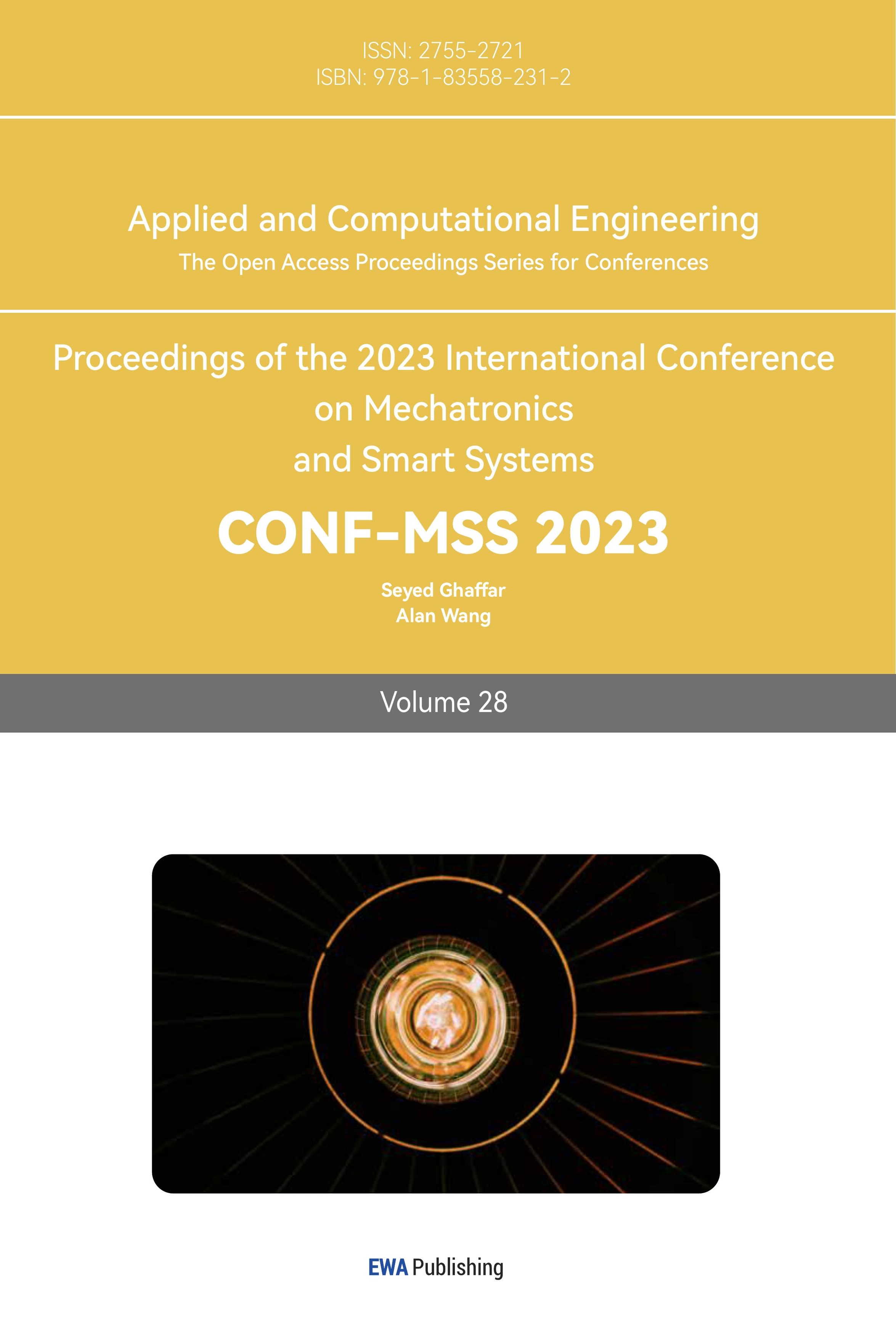References
[1]. CDC 2000 Facts about heart disease and stroke 2020 M2 Presswire
[2]. CDC 2022 Heart Disease Facts
[3]. Wu B, Li M, Yang Y, and Zhang W 2012 ECG acquisition circuit design based on C8051F330. Proc. 2012 IEEE-EMBS Int. Conf. Biomed. Health Inf. pp 93-96 doi: 10.1109/BHI.2012.6211515.
[4]. Kersschot I 1994 Unipolar versus bipolar leads Cardiac Pacing and Electrophysiology ed Aubert A E, Ector H, and Stroobandt R (Springer, Dordrecht) doi: 10.1007/978-94-011-0872-0_20.
[5]. Emanuele G, Fabio T, Francesco Z, Giuseppe S, Alireza M, Marco S and Giorgio F 2020 High-Value Tunable Pseudo-Resistors Design IEEE J. Solid-state Circuits 55(8) pp 2094-2105 doi: 10.1109/JSSC.2020.2973639.
[6]. Gifari M W, Zakaria H, and Mengko R 2015 Design of ECG Homecare:12-lead ECG acquisition using single channel ECG device developed on AD8232 analog front end. 2015 Int. Conf. Electri. Eng. Inf. pp 371-376 doi: 10.1109/ICEEI.2015.7352529.
[7]. Li Y 2021 Design of ECG Signal Detection Circuit Based on Pacing Pulse Suppression. 2021 IEEE Int. Conf. Electron. Tech. pp 664-669 doi: 10.1109/ICETCI53161.2021.9563387.
[8]. Aziz S, Ahmed S and Alouini 2021 M S ECG-based machine-learning algorithms for heartbeat classification. Sci. Rep. 11 pp 18738 doi: 10.1038/s41598-021-97118-5
[9]. Xiang J, Dong Y, Xue X, and Xiong H 2019 Electronics of a Wearable ECG With Level Crossing Sampling and Human Body Communication. IEEE Trans. Biomed. Circuits Sys. 13(1) pp 68-79, doi: 10.1109/TBCAS.2018.2879818
[10]. Pino E, Ohno-Machado L, Wiechmann E, and Curtis D 2005 Real-time ECG algorithms for ambulatory patient monitoring AMIA Annu Symp. Proc. 604(8)
Cite this article
Yang,Y. (2023). ECG circuit design and analysis algorithm. Applied and Computational Engineering,28,150-157.
Data availability
The datasets used and/or analyzed during the current study will be available from the authors upon reasonable request.
Disclaimer/Publisher's Note
The statements, opinions and data contained in all publications are solely those of the individual author(s) and contributor(s) and not of EWA Publishing and/or the editor(s). EWA Publishing and/or the editor(s) disclaim responsibility for any injury to people or property resulting from any ideas, methods, instructions or products referred to in the content.
About volume
Volume title: Proceedings of the 2023 International Conference on Mechatronics and Smart Systems
© 2024 by the author(s). Licensee EWA Publishing, Oxford, UK. This article is an open access article distributed under the terms and
conditions of the Creative Commons Attribution (CC BY) license. Authors who
publish this series agree to the following terms:
1. Authors retain copyright and grant the series right of first publication with the work simultaneously licensed under a Creative Commons
Attribution License that allows others to share the work with an acknowledgment of the work's authorship and initial publication in this
series.
2. Authors are able to enter into separate, additional contractual arrangements for the non-exclusive distribution of the series's published
version of the work (e.g., post it to an institutional repository or publish it in a book), with an acknowledgment of its initial
publication in this series.
3. Authors are permitted and encouraged to post their work online (e.g., in institutional repositories or on their website) prior to and
during the submission process, as it can lead to productive exchanges, as well as earlier and greater citation of published work (See
Open access policy for details).
References
[1]. CDC 2000 Facts about heart disease and stroke 2020 M2 Presswire
[2]. CDC 2022 Heart Disease Facts
[3]. Wu B, Li M, Yang Y, and Zhang W 2012 ECG acquisition circuit design based on C8051F330. Proc. 2012 IEEE-EMBS Int. Conf. Biomed. Health Inf. pp 93-96 doi: 10.1109/BHI.2012.6211515.
[4]. Kersschot I 1994 Unipolar versus bipolar leads Cardiac Pacing and Electrophysiology ed Aubert A E, Ector H, and Stroobandt R (Springer, Dordrecht) doi: 10.1007/978-94-011-0872-0_20.
[5]. Emanuele G, Fabio T, Francesco Z, Giuseppe S, Alireza M, Marco S and Giorgio F 2020 High-Value Tunable Pseudo-Resistors Design IEEE J. Solid-state Circuits 55(8) pp 2094-2105 doi: 10.1109/JSSC.2020.2973639.
[6]. Gifari M W, Zakaria H, and Mengko R 2015 Design of ECG Homecare:12-lead ECG acquisition using single channel ECG device developed on AD8232 analog front end. 2015 Int. Conf. Electri. Eng. Inf. pp 371-376 doi: 10.1109/ICEEI.2015.7352529.
[7]. Li Y 2021 Design of ECG Signal Detection Circuit Based on Pacing Pulse Suppression. 2021 IEEE Int. Conf. Electron. Tech. pp 664-669 doi: 10.1109/ICETCI53161.2021.9563387.
[8]. Aziz S, Ahmed S and Alouini 2021 M S ECG-based machine-learning algorithms for heartbeat classification. Sci. Rep. 11 pp 18738 doi: 10.1038/s41598-021-97118-5
[9]. Xiang J, Dong Y, Xue X, and Xiong H 2019 Electronics of a Wearable ECG With Level Crossing Sampling and Human Body Communication. IEEE Trans. Biomed. Circuits Sys. 13(1) pp 68-79, doi: 10.1109/TBCAS.2018.2879818
[10]. Pino E, Ohno-Machado L, Wiechmann E, and Curtis D 2005 Real-time ECG algorithms for ambulatory patient monitoring AMIA Annu Symp. Proc. 604(8)









